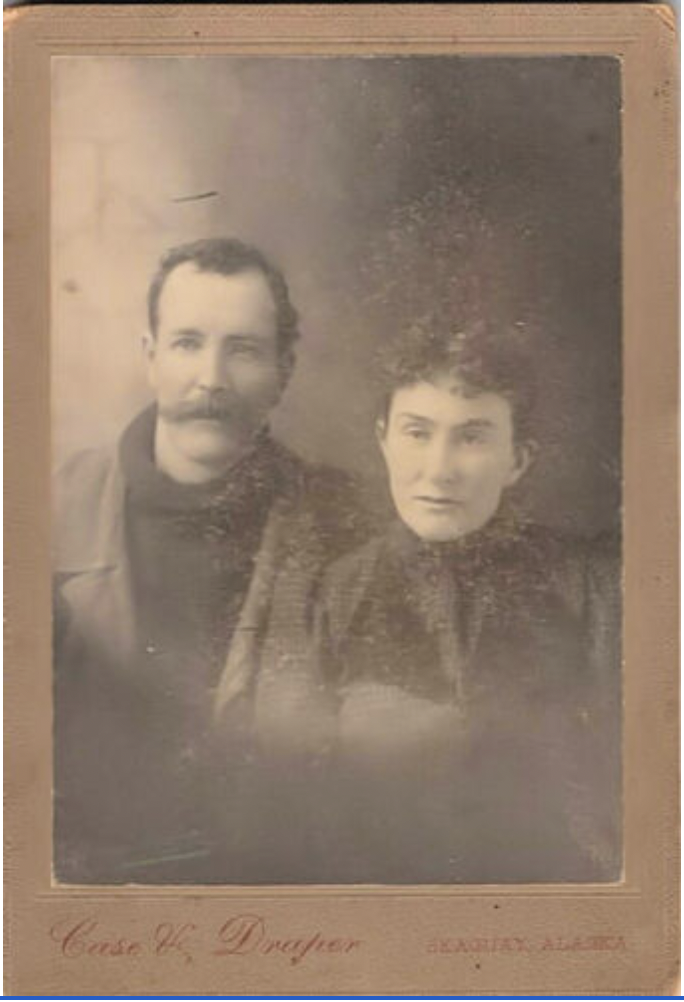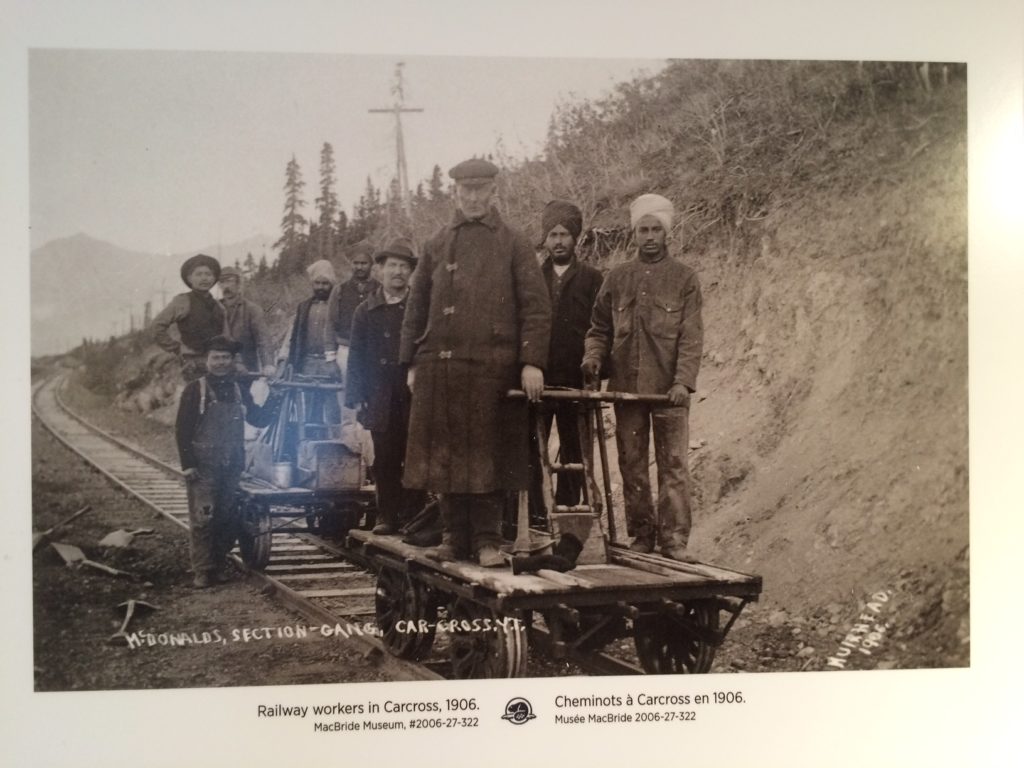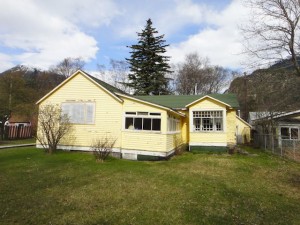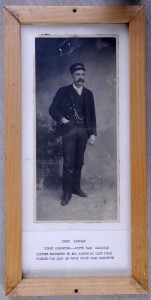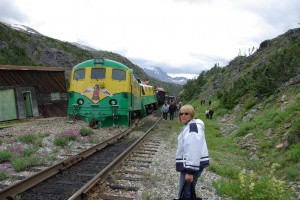William Arter was born on July 20, 1882, the oldest of eleven children in Bagthorp, Norfolk, England. In 1901 he was working on board the HMS Jupiter in Gibralter. He jumped ship in Vancouver, British Columbia, in 1905. In 1914 he was living in Skagway and met Caroline Louella Sundeen (born July 25, 1894) and they went to Whitehorse and were married in May, 1914. He was a member of the Brotherhood of Railway Car-Men in 1915 and was working for White Pass doing car repair. He and Carrie had 5 children and moved to Tacoma.
By 1918 he was a railroad car inspector in Seattle when he registered for the army. He lost one brother in World War One and one brother in World War Two. Although Carrie died at a young age in 1937 in Tacoma, William lived to be 88 and died on April 6, 1970 while residing at Olympia, Washington.
Seen above is the train on Broadway looking south, a Dedman’s photo.
1915 dir; colonist newp in Victoria 1916 mentions his bro KIA in France; Railway Carmens Journal #20 online; 1900 census; 1910 census; Dawson Daily news for June 1, 1914.
